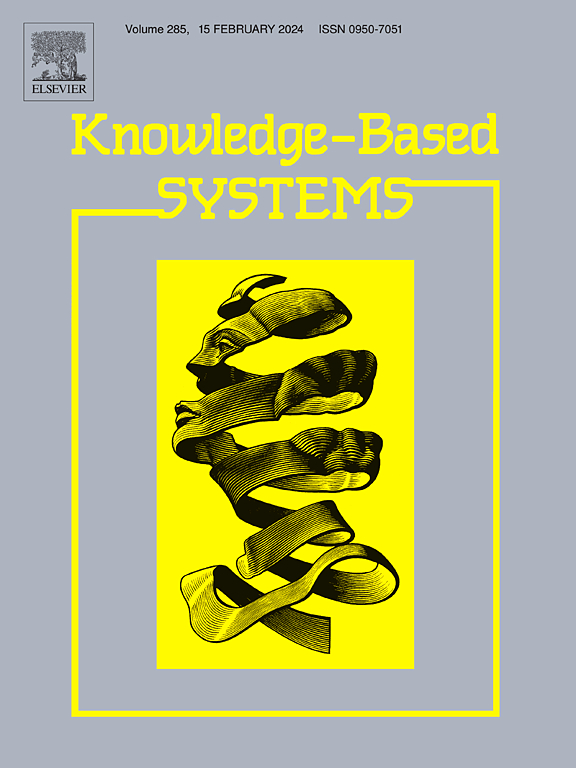通过带分层插槽选择器的双动态图进行多域对话状态跟踪
IF 7.6
1区 计算机科学
Q1 COMPUTER SCIENCE, ARTIFICIAL INTELLIGENCE
引用次数: 0
摘要
对话状态跟踪的目的是在多领域中保持用户意图的一致状态,以实现自然对话系统。然而,以往的研究往往无法捕捉到多种槽类型的差异,也没有充分考虑辨别信息的选择。不必要信息的增加会导致预测性能的下降。因此,谨慎选择高质量的信息势在必行。此外,考虑到每个时隙的基本信息和可用信息的类型各不相同,选择适当信息的过程也可能不同。为了解决这些问题,我们提出了 HS2DG-DST,一种基于分层插槽选择器和双动态图的 DST。我们的模型旨在通过明确利用每个时隙对差异化信息的需求,为最优值预测提供最大信息量。首先,我们根据多种属性对插槽类型进行分层分类。然后,两个动态图为每个插槽提供高度相关的信息。在 MultiWOZ 数据集上的实验结果表明,我们的模型优于最先进的模型。本文章由计算机程序翻译,如有差异,请以英文原文为准。

Multi-domain dialogue state tracking via dual dynamic graph with hierarchical slot selector
Dialogue state tracking aims to maintain user intent as a consistent state across multi-domains to accomplish natural dialogue systems. However, previous researches often fall short in capturing the difference of multiple slot types and fail to adequately consider the selection of discerning information. The increase in unnecessary information correlates with a decrease in predictive performance. Therefore, the careful selection of high-quality information is imperative. Moreover, considering that the types of essential and available information vary for each slot, the process of selecting appropriate information may also differ. To address these issues, we propose HS2DG-DST, a Hierarchical Slot Selector and Dual Dynamic Graph-based DST. Our model is designed to provide maximum information for optimal value prediction by clearly exploiting the need for differentiated information for each slot. First, we hierarchically classify slot types based on the multiple properties. Then, two dynamic graphs provide highly relevant information to each slot. Experimental results on MultiWOZ datasets demonstrate that our model outperforms state-of-the-art models.
求助全文
通过发布文献求助,成功后即可免费获取论文全文。
去求助
来源期刊

Knowledge-Based Systems
工程技术-计算机:人工智能
CiteScore
14.80
自引率
12.50%
发文量
1245
审稿时长
7.8 months
期刊介绍:
Knowledge-Based Systems, an international and interdisciplinary journal in artificial intelligence, publishes original, innovative, and creative research results in the field. It focuses on knowledge-based and other artificial intelligence techniques-based systems. The journal aims to support human prediction and decision-making through data science and computation techniques, provide a balanced coverage of theory and practical study, and encourage the development and implementation of knowledge-based intelligence models, methods, systems, and software tools. Applications in business, government, education, engineering, and healthcare are emphasized.
 求助内容:
求助内容: 应助结果提醒方式:
应助结果提醒方式:


